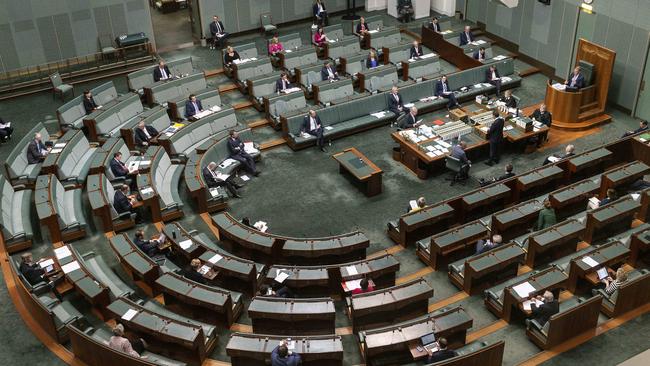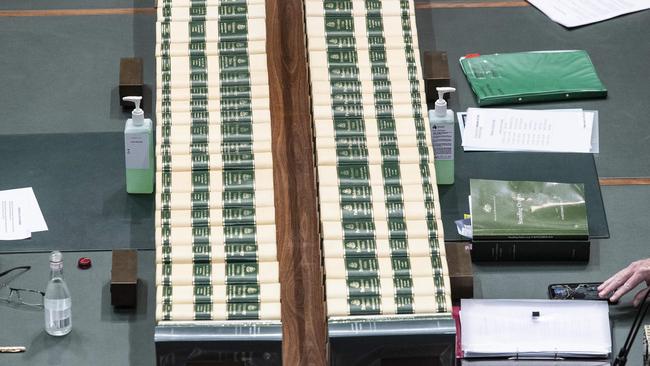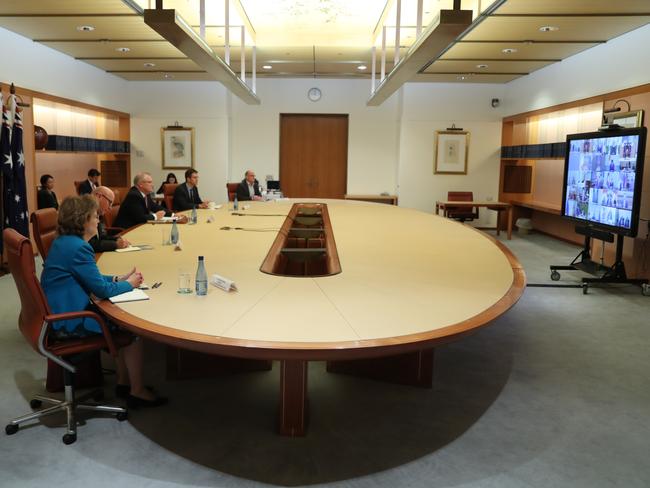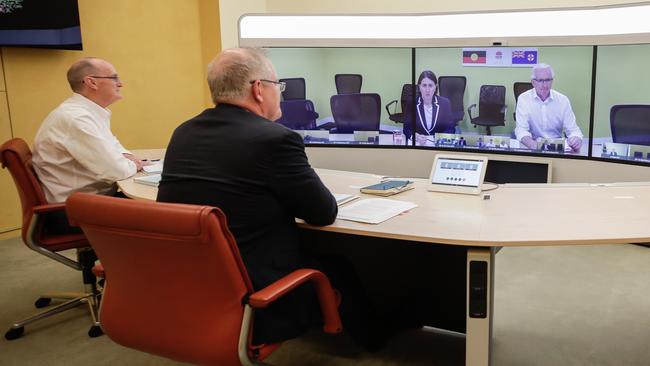Don’t be catty about a virtual parliament
Rojo the cat shows there are hidden complications to democracy by video. They can be overcome.

Scottish National Party MP John Nicolson was addressing the UK parliament’s Digital, Culture, Media and Sport Committee via video link in mid July when Rojo the cat’s ginger and white tail repeatedly flashed across the screen to the amusement of virtually all there. Or should we say all virtually there? In any case, serious concentration was lost.
In the real Australian parliament, physical proceedings don’t screech to a halt when MPs dogs, cats, or pet possums get out of hand around the chamber. Their animals are back at home.
Continuing our democratic forms of government during the coronavirus pandemic is one of the many challenges we face with new problems to solve.
In Australia, the House of Representatives sat only 27 days so far in 2020, and half of these were before the virus outbreak. Ironically, there were less sitting days by this time last year due to the federal election, just 17.
But in a regular year without a federal election, we’d expect more by now, such as 37 in 2018.

A ten-day six-month parliamentary sitting day deficit could blow out to 40 lost days over two years.
The National Cabinet is a great addition to our government repertoire and has proved effective, overseeing management of the coronavirus response, but it is an executive rather than parliamentary body, and doesn’t include the federal opposition or federal crossbench.
There are ways to keep parliamentary sitting days to relatively normal levels during what could be one or two years before a vaccine manifests, if we get one.
The federal government is not keen about a total virtual parliament. “The Government has no plans to conduct a virtual sitting of the parliament,” a spokesperson for Finance Minister Mathias Cormann told The Australian, adding the government is working with the Opposition to facilitate a physical sitting in the safest possible manner.
Reducing the number of MPs in the chamber, social distancing, and using hand sanitiser makes it possible for the parliament to operate with some safety, but when regions are in lockdown or restrictions, as Victoria is now, they risk being excluded from physical proceedings.
There are different models for running a virtual parliament. Not everyone has to attend virtually. Some MPs may be there physically, and some via video conferencing. Alternatively, you could set up a virtual debating chamber, with voting deferred until a physical sitting.
Constitutional lawyers believe an Australian virtual parliament is legally possible. Professor Anne Twomey from University of Sydney says section 125 of the constitution requires parliament to “meet” at the seat of government which is now in Canberra.
“So the question then is ‘can you meet virtually?’, and the answer is probably ‘yes’, but for safety sake, you probably want to host it from the seat of government.” She says the parliamentary speaker, president, and a minister could be in the chamber with the rest of the parliament attending virtually.
She says our constitutional forefathers appreciated that technology can change even though they would not comprehend today’s tech.

She says both houses have the power to make their own rules when it comes to standing orders, as agreed to when the pandemic began.
Professor Twomey says there are legal matters to address. Members have to vote securely, voting has to be accurate, and there must be certainty that MPs are voting, and not their staff or someone else.
She says one idea is for federal MPs in each state to meet in their respective state parliament and then to link those venues electronically. The meetings could use secure communications already in place.
“All the Commonwealth MPs from Victoria would all meet in Parliament House in Melbourne and all the Commonwealth MPs and senators from South Wales would meet inside Parliament House in New South Wales.”
Professor Rosalind Dixon from University of NSW also says virtual sittings are possible. “To create virtual sittings, there has to be some changes to legislation or standing orders, or both, but I believe the constitution permits it based on arguments of necessity and the need to interpret provisions broadly and purposively.
“I think there‘s no question that it’s a good idea to have parliament sitting and able to scrutinise the executive at a time where it’s having to do such big measures both economic and health measures that impact on personal liberty and future generations.
“No doubt, there will be a learning process where they won‘t get it right the first time,” she says, in which case a further amendment might be needed.”
Australia already has a secure governmental video conferencing system, the National Telepresence System (NTS) implemented in 2009. It has hosted 700 meetings and 31,000 personal video calls from 2009 to September 2018, and can handle conferences classified as “secret”.
State and territory governments, foreign affairs & trade, defence, and the Attorneys-General’s department connect through this system, along with federal ministers and departmental secretaries. The Department of Finance says this system has been used for cabinet meetings during the pandemic.
The NTS system seems tried, tested and secure, but can it be upscaled to manage a virtual parliament? The department offered no response.

Australian Greens’ leader Adam Bandt says work is needed to make a virtual parliament possible. “Potentially some things could be done remotely, but the system probably hasn‘t been set-up yet to allow the full functions which is disappointing. I am not convinced that the work is going on either.”
Mr Bandt doesn’t necessarily want a fully-fledged virtual parliament. A hybrid set-up where some MPs are physically in parliament with others joining virtually could work. He says the best possibility “might be a real world non technological solution”.
He says periodic virus breakouts, as predicted by Prime Minister Scott Morrison as part of the country’s virus suppression strategy, could lead to physical parliamentary sittings being cancelled regularly, without there being an alternative solution.
He says virtual sittings might exclude actually voting on legislation, as occurs with the Federation Chamber in federal parliament. MPs could vigorously debate issues virtually with the vote deferred until the parliament sits physically. Alternatively, proxy voting could be done by members physically present. This would ease security concerns.
He says a committee of parliament should work through options. “If we live with the virus for a while, and the Prime Minister‘s suppression strategy is the one that is continued to be adopted, then by definition, we will be facing outbreaks in some parts of the country at repeated times and so we need a plan.”
Labor has agreed to the cancellation of federal parliament until August, but Opposition Leader Anthony Albanese has said he wants an ability for federal members to put their case. Labor spokespeople were unavailable for comment however manager of opposition business Tony Burke has said he doesn’t favour a virtual parliament.

The issue of alternative sitting arrangements and a virtual parliament has bubbled along since the pandemic began. In March, Labor and the Coalition agreed that the House of Representatives and Senate could sit sooner “in a manner and form not otherwise provided in the standing orders”.
It means there is room to thrash out a workable alternative model for Australia, It could take the form of the UK hybrid system or be different. There are lots of options. Mr Bandt’s suggestion that a virtual debating chamber conduct debating sessions with physical votes taken later is one mechanism.
Today’s commercial video conferencing software should manage the task. Most systems let those in charge control who has speaking rights, and caters for the exchange of documents between participants. The conferencing chat channel can be used for making requests to the speaker and parliamentary officers. It seems virtual participation at some level can help.
The question is whether the government and parliament will look afresh at options so that the voices of elected MPs from all sides won’t be lost, as the pandemic proceeds further, maybe for another year or more. Tech can play a useful role.

To join the conversation, please log in. Don't have an account? Register
Join the conversation, you are commenting as Logout